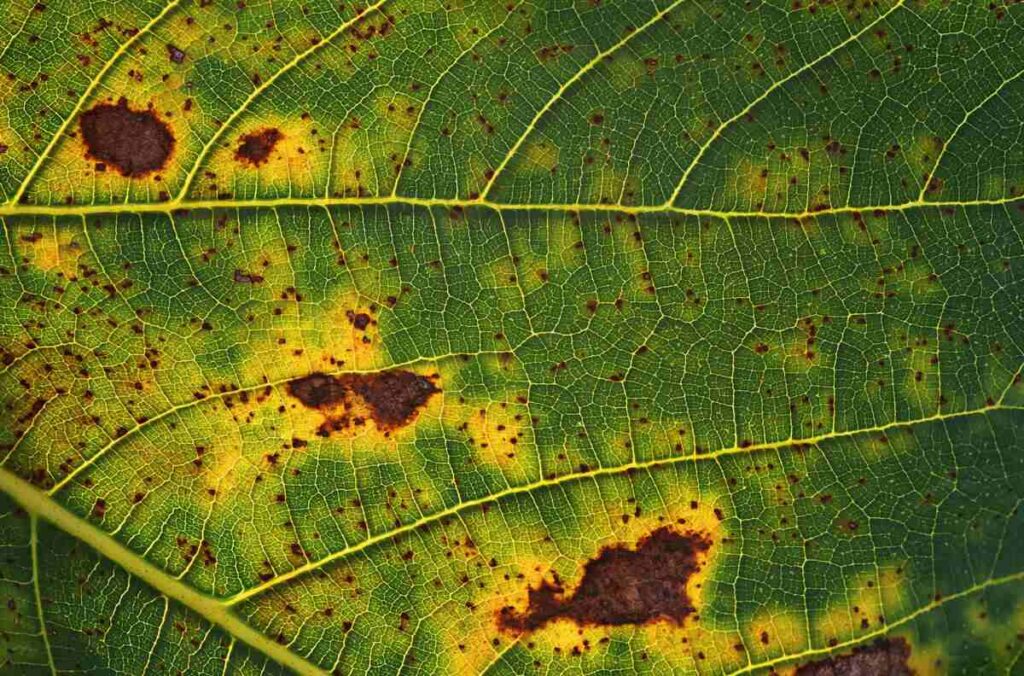
Leaf spot is a common term for many diseases affecting the foliage of ornamentals and shade trees. Fungi cause the majority of leaf spots. Bacteria cause some damage. If the leaves of your trees are with gray/brown lesions, you probably have a problem. This article will approach what you need to know about ash leaf spots.
Brown leaf spots are a common fungal or bacterial infection, sometimes surrounded by a halo of yellow or reddish tissue surrounding each spot. Ash leaf spots can spread like wildfire from leaf to leaf or plant to plant.
Leaf spot diseases are the most common plant disease in the US. And one of the most affected trees by leaf spots is:
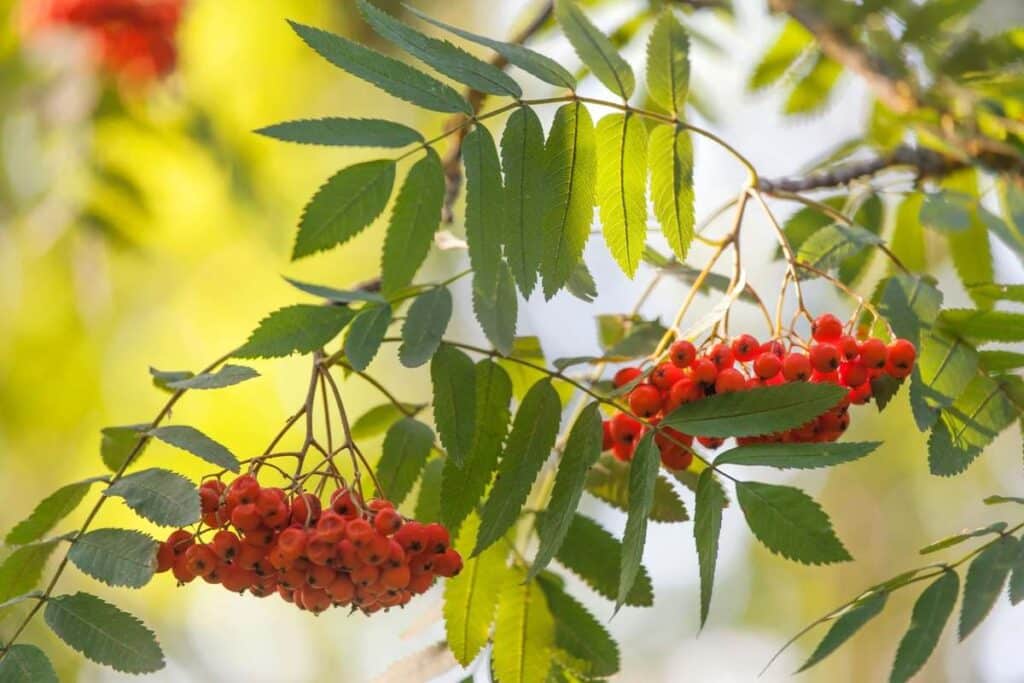
Fraxinus Albicans is a beautiful and colorful tree native to North America and Texas. It is most commonly called the Texas Ash. Its natural habitat is dry, rocky slopes, often over limestone.
This tree is a small deciduous tree growing to 10m tall with a trunk up to 30 cm in diameter. The flowers are purple, produced in small clusters in early spring.
Fungi cause most leaf spot diseases, although other organisms, such as bacteria and nematodes, can also cause foliar diseases.
Ash leaf spots are caused by the fungi (Mycosphaerella spp.). These fungi survive in the leaf litter underneath the ash tree. Early infections will appear on lower leaves and then spread throughout the tree.
Heavily infected leaves turn yellow and fade and drop prematurely; partial to complete premature defoliation of a tree or shrub may occur under some circumstances. For example, crabapples heavily infected with scab are often defoliated by July.
In the beginning, it is challenging to identify ash leaf diseases. However, some clues can help you.
The Mycosphaerella fungus can infect stems, leaves, sprouting buds, flowers, and fruit. Stem infection usually occurs at the base of the plant, but this often goes undetected. Flower infection leads to external and internal fruit rot.
On leaves, the Mycosphaerella fungus causes gray/brown lesions, usually starting at the leaf margins; sometimes, it occurs where the leaf is wounded on the petiole or at the junction between the petiole and leaf lamina.
On sprouting buds, Mycosphaerella can cause distortion or malformation of the developing leaves. It usually has a burnt-out appearance.
Flower infection: infected fruit usually doesn’t show external lesions; however, they may curl up slightly during growing and ripening.
Fruit: Cutting the fruits lengthways reveals a brown decoloration of the fruit tissue, which is not always that noticeable, and sometimes it is not found until the fruit has been shrink-rapped and marketed.
As you already know, sometimes it is difficult to notice these diseases at the beginning of the infection, so you should pay attention to every detail of your trees and their leaves and treat them in the best possible way.
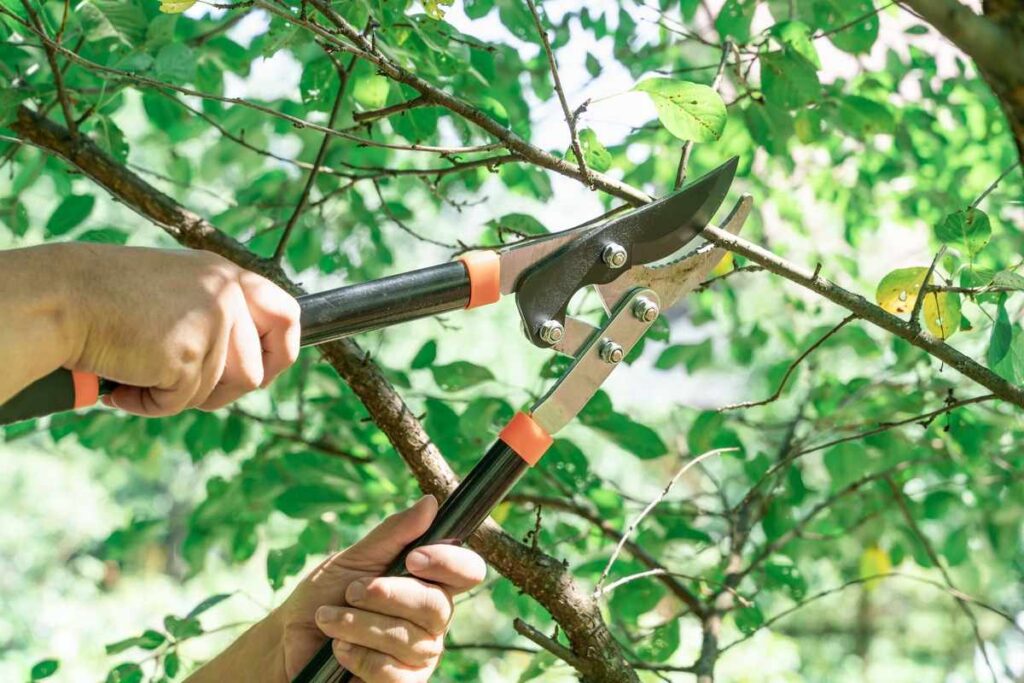
Leaf spots are especially problematic on new transplants or weakened or stressed plants. Chemical control could be one of your best options to treat ash leaf spots, especially in cool and wet springs. However, an accurate diagnostic of the specific leaf spot is always necessary to select the most efficacious treatment for your tree.
Whether you want to prevent or treat ash leaf spots, follow these tips:
2. Provide frequent treatment of neem oil or another fungicide to the foliage. Copper-based fungicides are safe and effective for most plants, but you should always do some research–copper can harm certain plants.
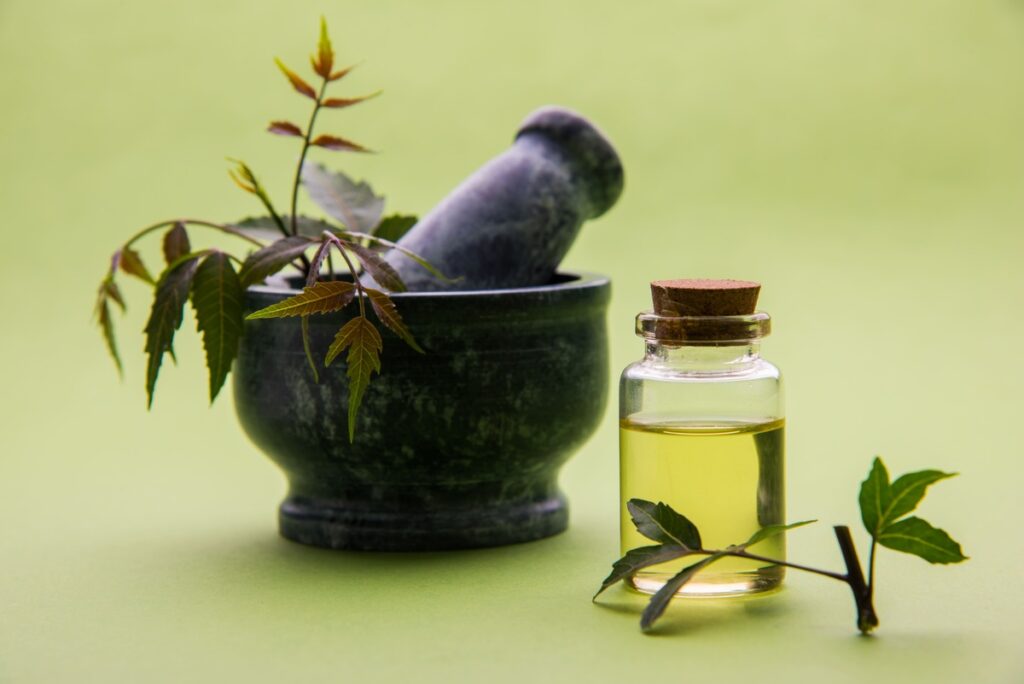
3. Avoid getting water onto the leaves as it recovers. Keep the plant away from other plants temporarily. This will prevent the infection from spreading to the foliage of other plants.
4. Monitor daily to ensure the infection has stopped spreading.
5. Repeat steps 1 to 4 until the plant has beaten the infection.
6. Keep a close eye on your Texas ash tree to ensure an infection does not happen again.
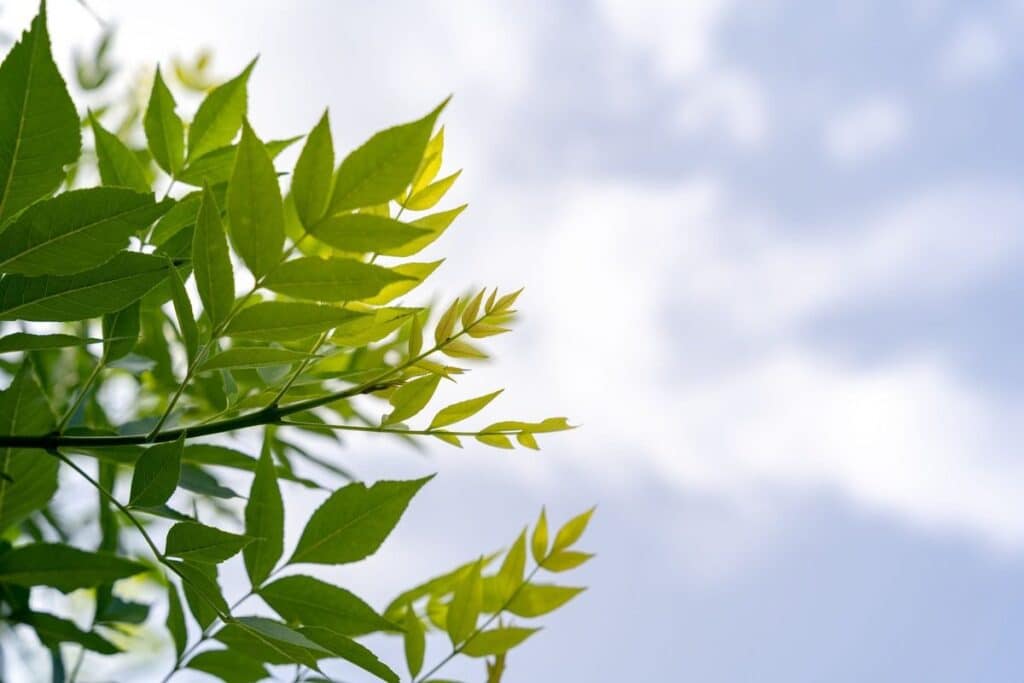
Ash leaf spots are fungal diseases that can significantly impact your tree’s health and aesthetic.
It is crucial to recognize and treat the ash leaf spots promptly to minimize the damage to your ash tree. That is why we have provided all the necessary information about ash leaf diseases. In this way, you can protect your trees from being affected by these fungi and maintain their beauty and health.
Tree Care Professional is a trusted tree company in Houston, Katy, Cypress, Tomball, Sugar Land, and Spring, TX. Call us if you need our help with proper tree care.
I hope you loved our article, and if you found it helpful, share this piece of content on your social media. Stay tuned, take care, and till next time!
Click on the Facebook icon to share this article!